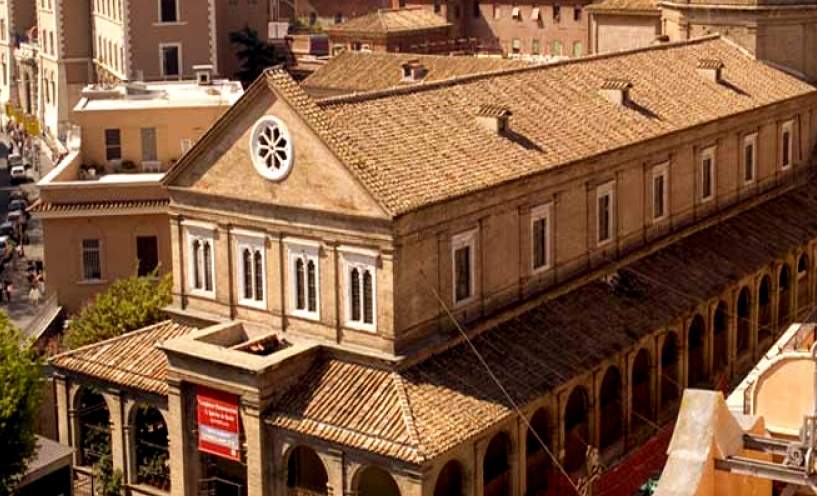The restoration of the Sistine Lanes, in theSanto Spirito in Sassia monumental complex in Rome, was inaugurated this morning. Present were President of the Republic Sergio Mattarella, Ministers Dario Franceschini and Roberto Speranza, Mayor of Rome Roberto Gualtieri, Lazio Region President Nicola Zingaretti, Special Superintendent of Rome Daniela Porro and Asl Roma 1 General Director Angelo Tanese.
The Santo Spirito in Sassia, considered one of the oldest hospitals in Europe, arose to support the poor, the sick and abandoned infants; its origins date as far back as 727 BC. In the 15th century it was Pope Sixtus IV who was responsible for the renovation of the hospital, which had been ruined by fire and looting.
Later the Hospital took the name Sistine Lane and was embellished with a cycle of frescoes, commissioned by the pontiff himself, in order to narrate the significant moments of his life and the history of the ancient building. The Sistine Ward, surmounted by a tiburium, houses an altar attributed to Andrea Palladio and a pictorial work by Carlo Maratti. Andrea Bregno is credited with the marble portal known as “of Paradise.”
120 meters long by 12 meters wide: these are the dimensions of the monumental aisle commissioned by Pope Sixtus IV that constitutes the first example of Renaissance civil architecture in Rome. The building consists of two rooms: the Lancisi Lane and the Baglivi Lane, in memory of the illustrious physicians Giovanni Maria Lancisi (1654-1720) and Giorgio Baglivi (1668-1707). These rooms are separated by a tiburium with mullioned and three-light windows attributed to the architect Giovanni Pietro Ghirlanducci. On the walls is an important pictorial cycle, executed in fresco in 1478 by artists of the Umbrian-Roman school and disciples of Melozzo, Ghirlandaio, Pinturicchio and Antoniazzo Romano, depicting, in more than fifty illustrated pictures, the origins of the hospital and the most important episodes in the life of Sixtus IV.
Restoration work includes consolidation of the structure, including the vaults of the Lancisian Library, treatment of the wall and stone facings, restoration of the interior and exterior plasterwork of the Wards, and restoration of the infixes and stained glass windows and the Antiquarium.
The restoration was made possible through the recovery of funds from the Lazio Region.
 |
| Rome, restoration of beautifully frescoed Sistine Lanes inaugurated |
Warning: the translation into English of the original Italian article was created using automatic tools. We undertake to review all articles, but we do not guarantee the total absence of inaccuracies in the translation due to the program. You can find the original by clicking on the ITA button. If you find any mistake,please contact us.